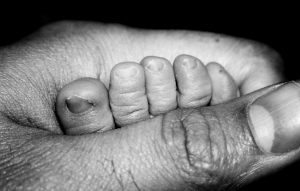
In my previous post I discussed a case in which it was determined that the standard of care used by the nurse and the midwife in a case that involved an emergency cesarean section in Georgia and it was determined by the jury that the nurse and midwife breached the standard of care causing the infant to be born with severe and permanent brain damage. It was also determined by the jury that the remainder of the medical team, including the doctor who performed the cesarean section and the neonatologist team that cared for the infant following delivery, did not breach the standard of care and acted without negligence in the birth of the child.
The following are some of the important questions that should be asked when determining whether or not there was a deviation in the standard of care when performing a cesarian section, and why these questions are important:
1.) Did the Patient present with Any, or None, of the Following Factors of Risk at the Time of Delivery?
Prior Large for Gestational Age Babies
Shoulder Dystocia
Gestational Diabetes Mellitus
Instrumental Delivery
Dysfunctional Labor
Previous Cesarean Section
Why is this important? It is important to evaluate any and all of the Risk Factors to determine if there is an increase in risk for a certain outcome or a disease that could result from that particular outcome.
2.) Were any of the Following Factors Identified and Documented while the Patient was Pregnant: Gestational Diabetes; Hypertension; and/or Anemia?
Why is this important? Gestational Diabetes, Anemia, and Hypertension are the most common risk factors associated with cesarean deliveries that are often repeat deliveries and the primary method of delivery in patients that exhibit these symptoms and risks of pregnancy and should be identified and documented as early as possible so that the delivery physician and staff are aware of these potential complications that lead to a cesarian delivery.
3.) Were any of the Following Conditions present in the Patient and/or the Fetus at the time of delivery: Fetal Distress; Risk Factors for the Mother; Obstetric Risk Factors; Breech of the Baby; and/or Difficult or Abnormal Labor (a/k/a dystocia)?
Why is this important? In the case discussed in my prior blog post, the indication for the emergency c-section was fetal distress as shown on the fetal monitor strip. The other factors such as breech presentation, difficult labor, or other risk factors did not appear to be present in that case. None the less, these are all factors that should be considered in a c-section delivery.
4.) Was a Cesarean Section by Emergency Performed?
Why is this important? Again, in the case discussed in my prior blog post, a c-section was performed by emergency and an emergency c-section is a c-section that is not planned but that is performed after the labor has started and it is determined by certain factors including, but not limited to, fetal distress, that an emergency c-section is necessary for the safety of both the fetus and the mother.
5.) Before performing the C-Section was an Informed Consent given to perform the procedure?
Why is this important? Most States require that the patient or an authorized representative of the patient give an informed consent to perform a cesarian section prior to the procedure.
I will continue my discussion of this topic in my next blog post titled, “The Standard of Care when a Cesarean Section is Performed in the Delivery of an Infant ~ part 2.”
At Julie A. Rice, Attorney at Law, & Affiliates we are experts at representing clients in Medical Malpractice Cases such as this where the Standard of Care for C-Sections is an issue and we encourage you to Contact Us for your free legal consultation if you or a loved one has been injured or killed in any incident involving Medical Malpractice of this or any other nature. We look forward to assisting you with your case!